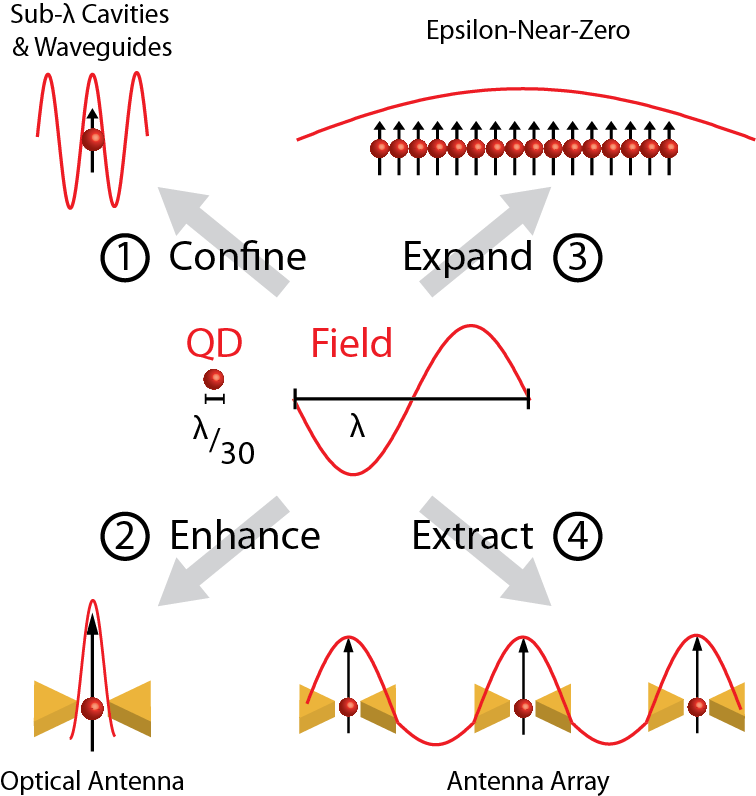
Overview and Objectives
Quantum Metaphotonics and Quantum Metamaterials represent opportunities to expand and redefine the range of light-matter interactions and electronic excitations for quantum optics and photonic devices.
Over the past two decades, metamaterials research has expanded the range of optical materials and optical phenomena available for photonic devices. By engineering the electric and magnetic resonances of patterned nanostructures, researchers have been able to tailor classical properties, including the effective permeability and permittivity of composite media.
Beyond engineering classical properties, metamaterials research has transformed the ways in which we design optical systems. Together with related developments in plasmonics and photonic crystals, metamaterials provide unprecedented freedom to define and sculpt electromagnetic modes. For example, optical antennas can localize light within deeply subwavelength volumes, while epsilon-near-zero metamaterials provide extended modes with uniform phase over micrometer length scales. This new freedom to design electromagnetic modes can have profound effects on microscopic light-matter interactions.
At the quantum level, both the strength and nature of light-matter interactions are limited by the size mismatch between the optical wavelength and the electronic wavefunction of single emitters. The interaction cross-section of a quantum emitter is small compared to the cross-section of conventional free-space modes. Extreme parameter metamaterials can directly challenge this limit by shrinking or expanding the optical wavelength for a fixed operating frequency (see figure). At one extreme, the deeply subwavelength modes of metamaterial cavities and optical antennas can be used to confine light and enhance local fields, thereby enhancing light-matter interactions with single emitters. At the other extreme, the extended modes of epsilon-near-zero waveguides and antenna arrays can be used to coherently couple large emitter ensembles to form collective excitations. This can be achieved by marrying the concepts of metamaterials with quantum optics.
Extreme parameter metamaterials can directly challenge this limit by shrinking or expanding the optical wavelength for a fixed operating frequency (see figure). At one extreme, the deeply subwavelength modes of metamaterial cavities and optical antennas can be used to confine light and enhance local fields, thereby enhancing light-matter interactions with single emitters. At the other extreme, the extended modes of epsilon-near-zero waveguides and antenna arrays can be used to coherently couple large emitter ensembles to form collective excitations. This can be achieved by marrying the concepts of metamaterials with quantum optics.
In this Multidisciplinary University Research Initiative, we aim to demonstrate how the new degree of electromagnetic design freedom enabled by metamaterial cavities, waveguides, and antennas can be combined with quantum emitters to:
(1) Enhance and modify microscopic light-matter interactions at the single emitter level to realize new regimes of solid-state quantum optics (Quantum Metaphotonics), and
(2) Enable collective, coherent excitations in dense arrays of emitters to realize photonic analogues of quantum solids with new optoelectronic properties (Quantum Metamaterials).